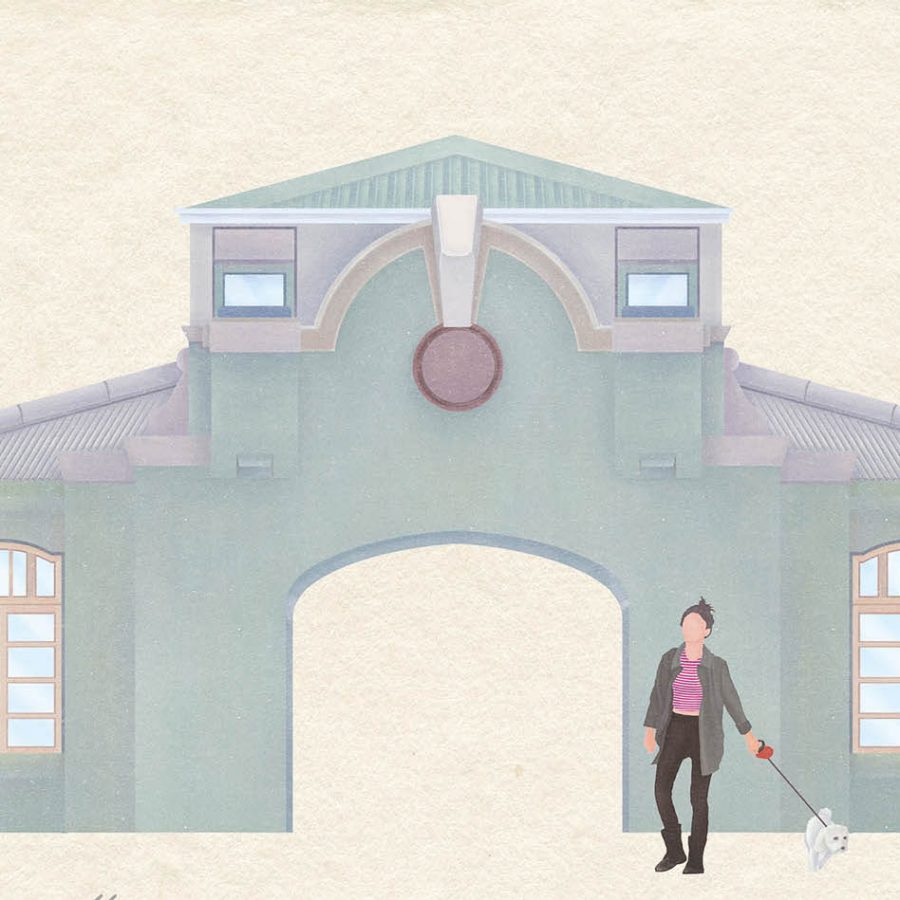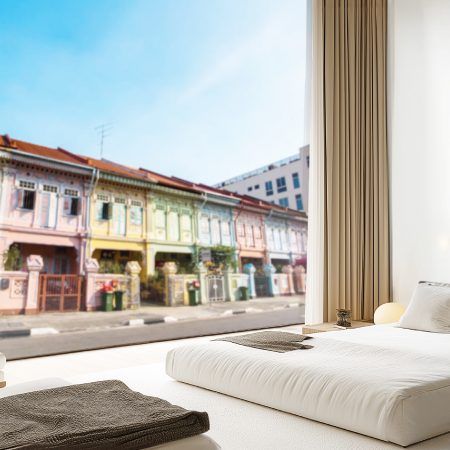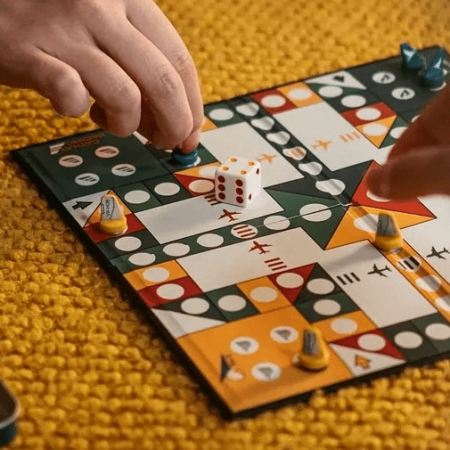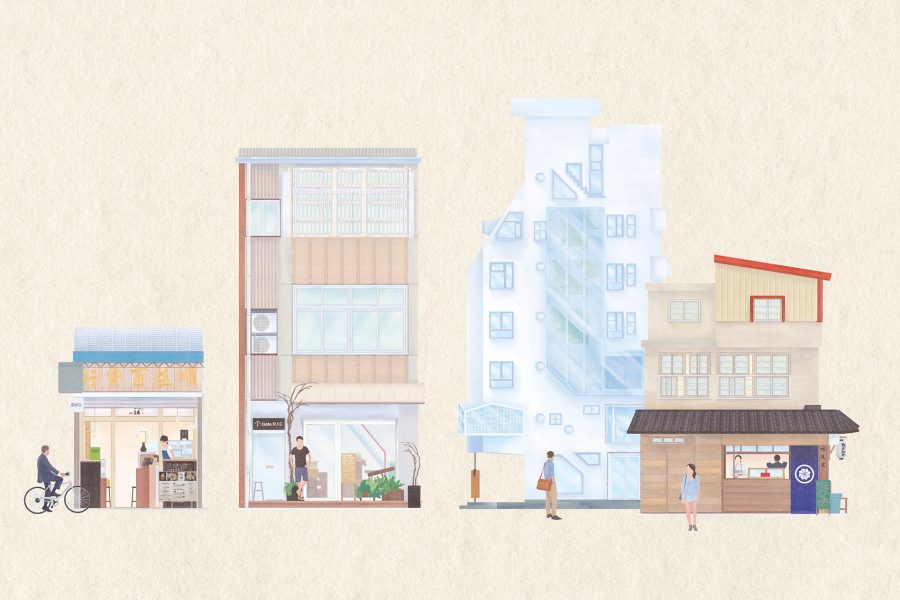This story begins in the world’s most exquisite department store. Hayashi , in Tainan’s West Central District, is a five-storey building originally opened by a Japanese entrepreneur in 1932. It declined after the war. For many years it was occupied by the Taiwan Salt Company.
The store reopened in 2013. It’s a pocket-sized operation by modern mall standards. The brands on display are similarly small scale: artisan suppliers of clothes, accessories, pastries, music, art, antiques and stationery. It’s hard to find an ugly thing in the whole place.
One display in the stationery area really caught my eye. Everything in Hayashi speaks of the store’s and Tainan’s Japanese heritage – but especially here, where every greeting card and book cover looks as if it’s been painstakingly laboured over for many hours. Along the top rack was a line of watercolours of the city: shop and hotel frontages with tiny, carefully detailed human figures. The paintings, so neat, thoughtful and quiet, seemed perfectly suited to this space, this store, this town. I wanted to know who the artist was.
A couple of enquiries later, we were heading for the West Gate Market with our guide Keira.
Instead of a backstreet workshop we arrived outside a small and super-cool hotel, the Jia-Jia. Outside, fine graffiti artwork on the white walls; inside, a small shop, a couple of dining tables and, shaking my hand, the artist who created those exquisite pieces in Hayashi, Cecil Tang.
It’s Tang’s fine work that adorns this article. He works in the West Gate Market. And as I was to discover, like all the young, creative and entrepreneurial people who work in the West Gate Market area, he is also a campaigner.

Credit: Cecil Tang
The focus of their campaign is a historic building that stands a few metres away. It’s an elegant but battered place: a cracked white stucco façade, scored with electricity cables and mildew. Outside there’s the junk of the informal economy: trucks, sagging benches, an improvised tin roof, cardboard boxes, old fans, trestle tables, dirty plastic chairs. Crumbling it may be, but it’s this place, this neighbourhood, that a small group of people are trying to revitalise.
This is the West Gate Market ; and it’s hard to imagine how impressive it would have looked when it opened in 1908. Its Japanese architects were set on turning Tainan and Taipei into Asian versions of Paris. So as well as the boulevards and neoclassical government buildings, they constructed the West Gate Market. The planners probably had Paris’ old Les Halles market in their minds.
The original Les Halles did not survive the property developers. Demolished in the 1970s, it wasn’t until April 2016 that a new building began to rise in its place. Is that the fate that awaits its distant Tainan cousin?
We walked through that crumbling West Gate Market portal and into a dimly lit passageway. In a word – it was dingy: dark workshops and boarded-up shopfronts. An old man, shirtless, was dragging cardboard boxes along the stained concrete floor. Another was fast asleep on his motorbike. It didn’t feel threatening, exactly, but the Taipei 101 mall it wasn’t.
A couple of turns into this warren-like building and it was as if the lights had gone up on a stage musical. Suddenly we were in a place of busy people, light, shops, noise, TVs, big orange buckets full of who knows what – and motorbikes. (I knew the Kymco mopeds were ubiquitous in Taiwan, China, but I didn’t expect to see them coasting up and down the rows of an indoor market. They’re ridden very quietly, politely, Tainanesely – but still, it’s a bit surprising.)

Credit: Cecil Tang
Our first stop was Granny O’s shop. It is not the most glamorous in the market. She sells hardware: knives, screwdrivers, cooking implements and those big noodle-cutting scissors that are an essential part of every local household.
But Granny O looks great: hair nicely permed, black top with flowery sequins, smart tan skirt. She’s been dressing to come to work lately. There are more and more young people coming to the market every day and she wants to look her best. The campaign is working.
This bustling, thriving, seemingly permanent place of food and funky shops is, how shall we put it, unofficial. The stallholders don’t have licences, but are tolerated, if not exactly encouraged, by the city while they decide what to do with the West Gate Market.
Next door to Granny O there is a boho store called Simple, selling backpacks and floppy hats. Opposite there is a joint selling great noodles and a café called Chun specialising in barley desserts. The biggest attraction is the taro flavoured shaved ice at Chloe.
The West Gate Market building won’t suffer the same fate as Les Halles. But the developers could keep the shell, evict the un-officials, and give the world yet another slick, air conditioned line-up of international brands. (Though to be fair, the mall next to my Shangri-La hotel mainly housed some not-too-familiar names: Top-Do, Five Pence, Modern Stately, Brappers and the very elegant Gaily Boy.)

Credit: Cecil Tang
Hence the campaigning to keep the West Gate Market special. At Rainbow is Coming , a gently hip boutique selling clothes, art books, beans, bags and the like, we find campaign central.
Erik Kao, the owner, is the mentor and driving force behind the West Gate Market community . He moved here from Taipei over a decade ago when, in Keira’s words, ‘the area was dying’. Before long, he’d organised a gang of young entrepreneurs bent on revitalising the market and Zhengxing Street. They launched fairs, street magazines and a band. With their t-shirts, concerts and campaign posters, theirs is a gently humorous uprising.
‘I think it’s a great example for foreign visitors, showing how Tainan is today, and how it can be transformed,’ says Keira. ‘Rainbow is Coming is not only a shop; it is more like a base for a social movement, a lab for new ideas and a community centre that unites the neighbourhood. How can you not love a shop like this?’
In short, Keira, you can’t.
After two days gradually succumbing to its quiet charm, I began thinking more and more of Kyoto. Kyoto, too, lost its capital city status. Instead it became a centre of art, history and heritage, a refuge for less commercial and aggressive souls. Tainan is the same: Hongkongers as well as Taipei people are drawn here by its lower rents, lighter, cleaner cuisine and slower pace.
Kyoto’s Nishiki Market is one of my favourite places in the world, a place where you can spend hours and still emerge feeling spiritually revitalised, not in some kind of mall-induced retail stupor. Tainan’s West Gate Market could be that. Sign me up to the campaign. I’ll buy the t-shirt.
The writer stayed at Shangri-La’s Far Eastern Plaza hotel , Tainan.
Hero illustration: Cecil Tang.
This story was originally published in January 2017 and updated in September 2020
Kaohsiung travel information
- Return
- One way
- First
- Business
- Premium Economy
- Economy
Booking of more than 9 passengers is currently not available online. Please contact your local reservations office.
| Su | Mo | Tu | We | Th | Fr | Sa |
|---|---|---|---|---|---|---|
| Su | Mo | Tu | We | Th | Fr | Sa |
|---|---|---|---|---|---|---|
- Return
- One way
- First
- Business
- Premium Economy
- Economy
Booking of more than 9 passengers is currently not available online. Please contact your local reservations office.
| Su | Mo | Tu | We | Th | Fr | Sa |
|---|---|---|---|---|---|---|
| Su | Mo | Tu | We | Th | Fr | Sa |
|---|---|---|---|---|---|---|
- China – the Chinese Mainland, Hong Kong SAR, Macao SAR and Taiwan Region
- Hong Kong SAR - English
- Chinese Mainland (China) - English
- Taiwan, China - English
- 香港特別行政區 - 繁體中文
- 中国內地 - 简体中文
- 中國台灣 - 繁體中文
- Africa
- South Africa - English
- Asia
- Bangladesh - English
- Korea - English
- Singapore - English
- Cambodia - English
- 한국 - 한국어
- Sri Lanka - English
- India - English
- Malaysia - English
- Thailand - English
- Indonesia - English
- Maldives - English
- ประเทศไทย - ภาษาไทย
- Indonesia - Bahasa Indonesia
- Myanmar - English
- Vietnam - English
- Japan - English
- Nepal - English
- Việt Nam - tiếng Việt
- 日本 - 日本語
- Philippines - English
- Australasia
- Australia - English
- New Zealand - English













